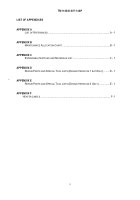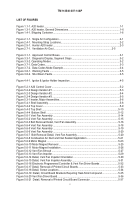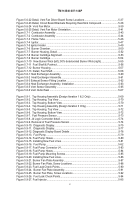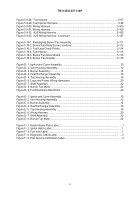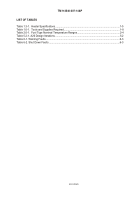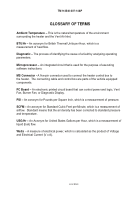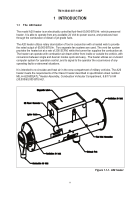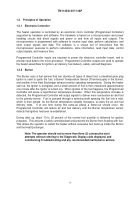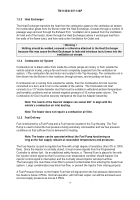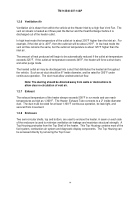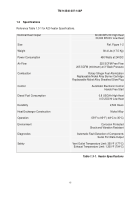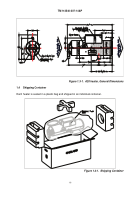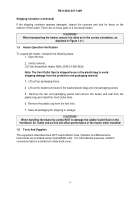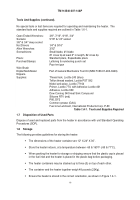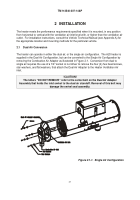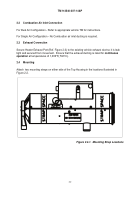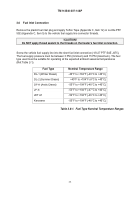TM-9-2540-207-14-P - Page 21 of 288
TM 9-2540-207-14&P
1-3
1.2.3 Heat Exchanger
The Heat Exchanger transfers the heat from the combustion gases to the ventilation air stream.
Hot combustion gases from the Burner enter the Heat Exchanger, circulate through a number of
passage ways and exit through the Exhaust Port.
Ventilation air is passed from the Ventilation
Air Inlet end of the heater, blown through the Heat Exchanger (where it exchanges heat from
the walls of the flame tube), and then exits at the Ventilation Air Outlet end.
! Warning !
Nothing should be welded, screwed or otherwise attached to the Heat Exchanger
because this may cause the Heat Exchanger to leak and introduce toxic fumes into the
ventilation air stream
.
1.2.4
Combustion Air System
Combustion air is drawn either from inside the vehicle (single air mode), or from outside the
vehicle (dual air mode), using a fan and motor completely separate from the ventilation air
system.
(The combustion fan and motor are located in the Top Housing). The combustion air is
then blown into the Burner in two locations, through primary, and secondary air ducts.
If combustion air is coming from outside the vehicle, then the Combustion Air Inlet must be
connected to a duct, and in turn to the outside of the vehicle.
The Combustion Air Inlet
connects to a 1.5" inside diameter duct that must be suitable to withstand ambient temperature
and humidity conditions and an internal negative pressure of 10 inches water column.
The
Combustion Air Duct must be securely clamped at the Dual Air Adapter Assembly.
Note: The nozzle of the Dual Air Adapter can swivel 360° to align with the
vehicle’s combustion air inlet ducting.
Note: The heater does not require a combustion air filter.
1.2.5 Fuel Delivery
Fuel is delivered by a Fuel Pump and a Fuel Injector located in the Top Housing. The Fuel
Pump is used to boost the fuel pressure during extremely cold weather and low fuel pressure
conditions so that sufficient fuel is delivered for heating.
Note: The heater can be operated without the Fuel Pump functioning as
long as the fuel supply remains at reasonable temperatures and pressures.
The Fuel Injector is used to regulate fuel flow with a high degree of resolution (from 0% to 100%
flow).
Since the Injector is normally closed, it must receive signals from the Programmed
Controller to deliver fuel.
As an additional safety feature, a
Thermal Fuse is placed in line with
the injector control signal so that if a serious over temperature condition should happen, the
injector control signal is interrupted, and the normally closed Injector will stop fuel flow.
The fuel supply line must have a fuel filter to prevent contaminates from entering the heater fuel
system.
Large contaminates may block fuel flow, or prevent the Injector from closing properly.
A Fuel Pressure Sensor on the Heater Fuel Inlet will signal when the fuel pressure delivered to
the heater is below 3 PSIG.
Normal operation, with full heat output, can still be achieved even
at a fuel supply pressure as low as 3 PSIG.
Back to Top

